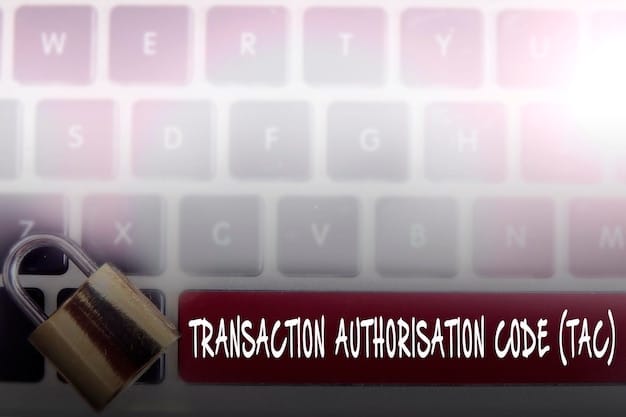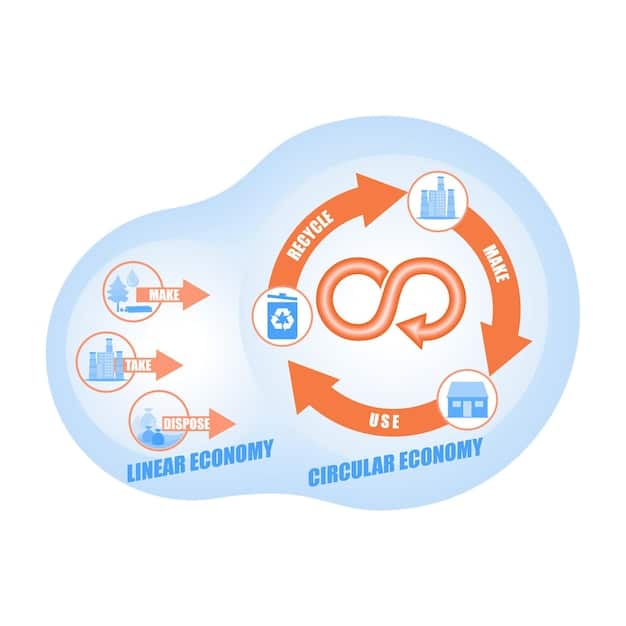Secure Your Web Apps: OAuth 2.0 Tutorial for US Developers

Securing web applications with OAuth 2.0 is crucial for developers in the US, providing a standardized and secure way to grant access to resources without exposing user credentials, and this tutorial offers a practical guide to implement it effectively.
Ready to fortify your web applications? This tutorial provides a practical, step-by-step guide for developers in the US on securing your web applications with OAuth 2.0, ensuring robust authentication and authorization.
Understanding OAuth 2.0: An Overview for US Developers
OAuth 2.0 is an authorization framework that enables applications to obtain limited access to user accounts on an HTTP service, such as Facebook, Google, or GitHub. It delegates user authentication to the service that hosts the user account and authorizes third-party applications to access user-specific resources.
For developers in the US, understanding and implementing OAuth 2.0 is essential for building secure and user-friendly web applications. This section provides a comprehensive overview of OAuth 2.0, its key components, and why it’s crucial for modern web development.
Key Concepts of OAuth 2.0
OAuth 2.0 involves several key players and concepts that developers should grasp to implement it effectively.
- Resource Owner: The user who owns the data and grants permission to access it.
- Client: The application requesting access to the resource owner’s data.
- Authorization Server: Issues access tokens after successful authentication and authorization.
- Resource Server: Hosts the protected resources and verifies the access token.
- Access Token: A credential that the client uses to access protected resources.
Why OAuth 2.0 is Crucial for US Developers
In the US, data privacy and security are paramount, making OAuth 2.0 an indispensable tool for developers. By using OAuth 2.0, developers can ensure that user data is accessed securely and with explicit consent. Ignoring these practices can lead to security vulnerabilities, reputational damage, and legal repercussions under US data protection regulations.
In summary, OAuth 2.0 is not just a best practice but a necessity for developers in the US aiming to build secure, user-friendly, and compliant web applications.
Setting Up Your Development Environment
Before diving into the implementation details, it’s crucial to set up your development environment correctly. This ensures a smooth and efficient development process, especially for US-based developers working with OAuth 2.0.
This section guides you through the necessary steps to configure your environment, install the required software, and set up the basic tools you’ll need for implementing OAuth 2.0.

Required Software and Tools
To get started with OAuth 2.0, you need the following software and tools installed on your system:
- Text Editor: A good code editor like Visual Studio Code, Sublime Text, or Atom.
- Programming Language: Choose a language such as Python, Node.js, or Java and ensure it’s installed correctly. A package manager will be needed as well (pip for Python, npm for Node.js).
- HTTP Client Tool: Postman or Insomnia for making HTTP requests to test your OAuth 2.0 implementation.
Configuring Your OAuth 2.0 Provider
To integrate OAuth 2.0 into your application, you need to configure an OAuth 2.0 provider like Google, Facebook, or Auth0. Each provider has its own setup process, but the basic steps generally include:
- Sign up for a developer account with your chosen provider.
- Create a new application and register your redirect URI.
- Obtain your client ID and client secret.
Setting up your development environment is a critical first step in implementing OAuth 2.0. By ensuring you have the right tools and configurations, you’ll be well-prepared to build secure and robust web applications.
Implementing the Authorization Code Grant Flow
The Authorization Code Grant flow is one of the most common and secure OAuth 2.0 flows. It involves multiple steps and interactions between the client, resource owner, authorization server, and resource server.
This section provides a detailed walkthrough of implementing the Authorization Code Grant flow in your web application, tailored for developers in the US.
Step-by-Step Implementation
Here’s a step-by-step guide to implementing the Authorization Code Grant flow:
- Redirect the user to the authorization server: Your application redirects the user to the authorization server, including the client ID, redirect URI, scope, and response type.
- User grants permission: The user logs in (if necessary) and grants permission to your application.
- Authorization server redirects back to your application: The authorization server redirects the user back to your application with an authorization code.
- Your application exchanges the authorization code for an access token: Your application sends a request to the authorization server with the authorization code, client ID, and client secret to obtain an access token.
- Access protected resources: Your application uses the access token to access protected resources on behalf of the user.
Implementing the Authorization Code Grant flow is a cornerstone of OAuth 2.0 security. By following these steps, developers can ensure a secure and seamless user experience.
Handling Access Tokens and Refresh Tokens
Access tokens and refresh tokens are crucial components of OAuth 2.0, enabling secure access to protected resources. Understanding how to handle these tokens is essential for developers in the US.
This section provides guidance on managing access tokens and refresh tokens, including storing them securely, using them to access resources, and refreshing them when they expire.
Storing Access Tokens Securely
Storing access tokens securely is paramount to prevent unauthorized access to user data.
- Use HTTPS: Always use HTTPS to encrypt data transmitted between the client and server.
- Secure Storage: Store access tokens in a secure storage mechanism, such as an encrypted database or a secure cookie with the HttpOnly flag.
- Avoid Storing in Client-Side Code: Never store access tokens directly in client-side code, as this can make them vulnerable to theft.
Refreshing Access Tokens
Access tokens typically have a limited lifespan. When an access token expires, you can use a refresh token to obtain a new access token without requiring the user to re-authorize your application.
- Check if the access token is expired.
- If expired, send a request to the authorization server with the refresh token, client ID, and client secret.
- The authorization server issues a new access token and optionally a new refresh token.
- Store the new access token and refresh token securely.

Properly managing access tokens and refresh tokens is vital for maintaining the security and usability of your OAuth 2.0 implementation. By following these guidelines, developers can ensure that user data remains protected at all times.
Securing Your OAuth 2.0 Implementation
While OAuth 2.0 provides a robust framework for authorization, it’s crucial to implement it securely to prevent common vulnerabilities. This section outlines best practices for securing your OAuth 2.0 implementation, ensuring the confidentiality, integrity, and availability of user data.
Securing your OAuth 2.0 implementation is an ongoing process that requires vigilance and attention to detail. By following these best practices, developers can minimize the risk of security breaches and ensure a safe and trustworthy user experience.
Best Practices for Security
Here are some key best practices to consider when securing your OAuth 2.0 implementation:
- Validate Redirect URIs: Always validate redirect URIs to prevent authorization code interception attacks.
- Use HTTPS: Ensure all communication between the client, authorization server, and resource server is encrypted using HTTPS.
- Protect Client Secrets: Store client secrets securely and never expose them in client-side code.
- Implement Proper Error Handling: Implement proper error handling to prevent information leakage and denial-of-service attacks.
Common Vulnerabilities and How to Avoid Them
Developers should be aware of common OAuth 2.0 vulnerabilities and take steps to mitigate them.
By staying informed and proactive, developers can protect their applications from common OAuth 2.0 vulnerabilities and maintain a strong security posture.
Testing and Debugging Your OAuth 2.0 Application
Testing and debugging are crucial stages in the development process, ensuring that your OAuth 2.0 implementation works correctly and securely. This section provides guidance on testing and debugging your OAuth 2.0 application, helping you identify and fix issues before they impact users.
- Use Mock Authorization Servers: Use tools like Mockoon or WireMock to simulate authorization servers and test your client’s behavior in different scenarios.
- Review Logs: Regularly review application logs to identify potential issues or security breaches.
- Use Debugging Tools: Tools like Postman and Insomnia can help you inspect HTTP requests and responses and debug your OAuth 2.0 implementation.
Thorough testing and debugging are essential for ensuring the reliability and security of your OAuth 2.0 application. By following these guidelines, developers can catch and fix issues early, minimizing the risk of security breaches and user experience problems.
| Key Point | Brief Description |
|---|---|
| 🔑 OAuth 2.0 Basics | Understanding primary actors and flows in OAuth 2.0. |
| 🛠️ Setup | Configuring environment and tools for OAuth 2.0 dev. |
| 🔄 Authorization | Implementing the Authorization Code grant flow. |
| 🛡️ Token Handling | Securing, storing and refreshing OAuth 2.0 tokens. |
Frequently Asked Questions
▼
OAuth 2.0 is an authorization framework that enables secure delegated access to resources. It’s important because it allows users to grant limited access to their data without sharing their credentials.
▼
The main components include the resource owner, client, authorization server, resource server, and access token. Each component plays a crucial role in the authorization process.
▼
Access tokens should be stored in a secure storage mechanism, such as an encrypted database or a secure cookie with the HttpOnly flag, and never directly in client-side code.
▼
A refresh token is used to obtain a new access token without requiring the user to re-authorize the application, providing a seamless user experience.
▼
Common vulnerabilities include redirect URI manipulation, client secret leakage, and lack of proper error handling. Developers should be aware of these and take steps to mitigate them.
Conclusion
In conclusion, securing your web applications with OAuth 2.0 is essential for protecting user data and ensuring trust. This tutorial has provided a practical guide for developers in the US to implement OAuth 2.0 effectively, covering key concepts, implementation steps, security best practices, and testing strategies. By following these guidelines, you can build robust and secure web applications that meet the highest standards of data privacy and security.





